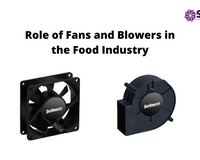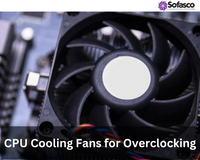Fan grids or fan walls are a common sight in industrial cooling and ventilation systems. As the name suggests, the grids may feature multiple fans arranged parallel to each other. These parallel arranged fans help overcome the low air throughput of fans in industrial or commercial cooling and ventilation units. Other than overcoming the lack of sufficient air, there are multiple aspects in which the fan grid solutions with more than one fan can be beneficial. This article discusses how using multiple cooling fan units in a fan grid solution can be beneficial

What is a Fan Grid?
A fan grid is a metallic structure used in ventilation applications, where multiple fans are organized in series or parallel. The fan grids are used when higher air volume is required and a larger ventilation area needs to be covered. The metallic structure helps in installing multiple electric fans without powering each fan individually. Installation of fan grid in the ventilation systems assures uniform airflow, integrated power circuitry, and redundant housing for fans. In addition, the fan grid being a robust structure absorbs mechanical vibrations and prevents damage to fans to some extent.
Significant Benefits of Using Multiple Cooling Fan Units in a Single Grid
Multiple cooling fan units in a single grid operate at the same time to produce continuous airflow. The following benefits of these units make them popular.
- Integrated Power Source: The multiple axial cooling fans in a single grid or wall use a single power source. If all fans are used individually, every fan would require an individual source of power. However, if a fan wall is integrated with power distributing circuitry, only one source of power can be used to run all the fans on the grid. This integrated power source can help in saving power consumption. Since the cooling and ventilation units of commercial or industrial buildings consume nearly 40% to 50% of overall energy consumption, using multiple fans in one grid can reduce overall power consumption.
- Enhanced Efficiency: Efficiency of cooling and ventilation units is defined as the overall air throughput at the consumed power. The air throughput for multiple fans is comparatively higher and the power consumption is lower with an integrated power supply, thus the direct increase in efficiency can be seen.
- Consistent Air Throughput: Parallel positioning of multiple cooling fan units produces a uniform airflow across a wide throughput area. By varying the speeds of the fans, the air pressure, air output, etc can be adjusted. Generally, the axial cooling fans are used in fan walls, the laminar flow of air from each fan gives a consistent volume of air.
- Ease of Installation: Installation of multiple fans on a single frame or grid is not complex at all. The fans can be mounted using various mounting mechanisms. Bolt-in, weld-on, etc are the mounting mechanisms that could be adopted for installation.
- Ease of Troubleshooting and Maintenance: When it comes to maintenance or troubleshooting of one or more fans in the grid, the troubleshooting and maintenance can be done collectively. If one fan faces the problem, it can be separated and troubleshot. There is no need of dismantling the entire setup even if any maintenance activities such as dust removal, or rust removal are being carried out. However, dismantling becomes a necessity if parts replacement is required.
- Noise Attenuation: Industrial or commercial fans often become a source of the noise. However, integrating multiple fans on one grid can help in achieving noise reduction. Noise is usually generated due to friction between mechanical components and linkages, and the swirling motion of air. If multiple fans are enclosed in a grid, the grid material itself acts as the support to the setup. This leads to a reduction in noise. Since all these fans are separated by the structure walls of a grid, air swirl is taken care of which again attenuates the noise.
- Controlled Mechanical Vibration: Grid walls offer firm support to cooling fan units. Most times, the grid itself acts as a shock or vibration absorber. Reduction in vibration eventually helps in the reduction of loose components and overall maintenance.
- Design Flexibility and Compact Construction: The fans can be mounted on the fan wall in various designs, however, it is essential that the fans remain vertically or horizontally parallel. The unit inside a grid can be left empty if the throughput requirements are less. This gives the flexibility of grid design and mounting. Each empty unit must be filled with a metallic or nonmetallic disc which helps in balancing the load on the grid. Also, using a grid or fan wall helps in saving space. Mounting multiple fans at different locations take extra space which can be saved by integrating all fans in a grid.
The multiple cooling fan units on a single grid can offer all the above-mentioned benefits, only if high-quality fans are utilized. Poor fan quality can result in heat generation, pressure drop, a back drag of air, abrupt fan damage, etc. It is why sourcing industrial fans from trusted manufacturers and suppliers like Sofasco can help in enhancing overall performance and results. Sofasco is a global supplier of high-quality industrial fans and blowers. They offer AC/DC powered axial, radial, and cross-flow fans for industrial cooling applications.












